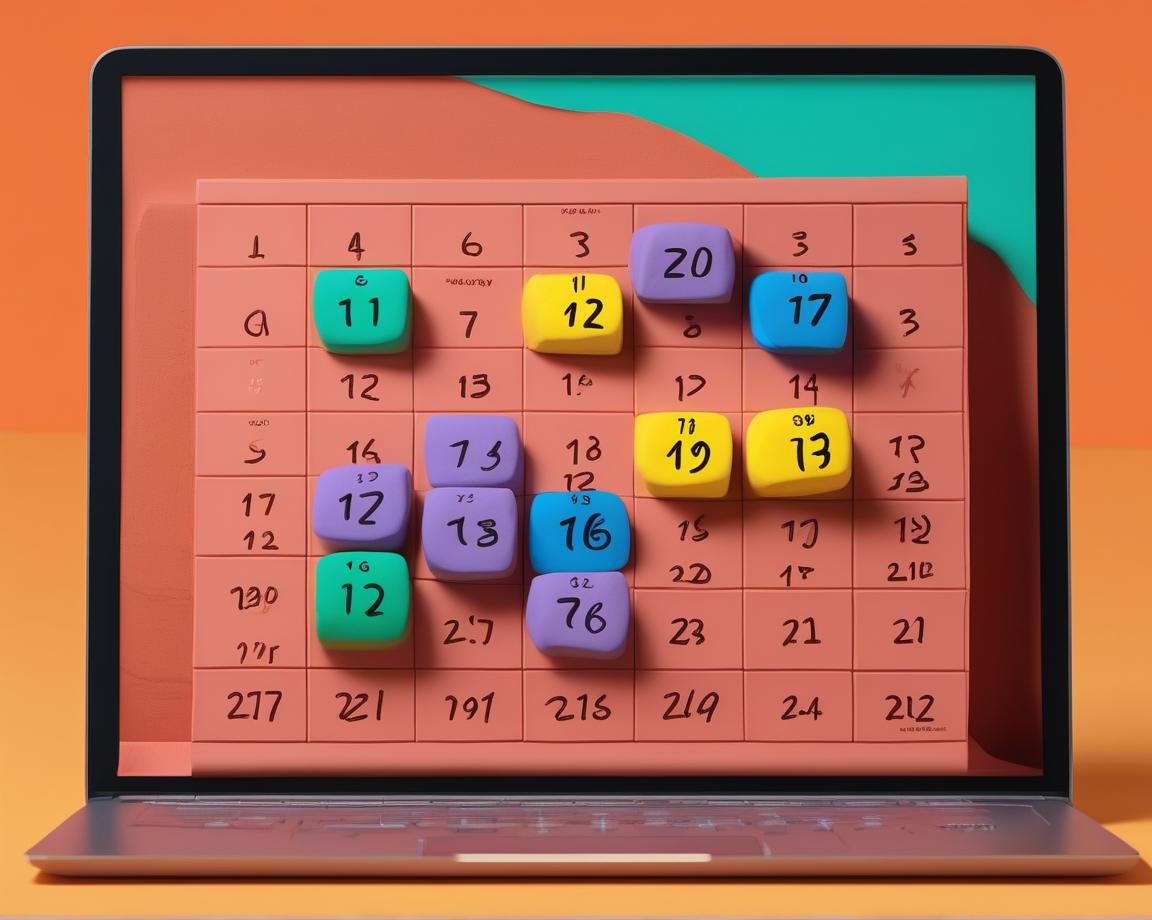Tired of giving ZoomInfo 5-6 figures annually for prospects that aren’t qualified or don’t exist?
So was the Account Executive who inspired this post:

If you’re still using a clunky data provider like ZoomInfo, Lusha, Seamless, LeadIQ, Cognism, etc. you’re overpaying for bad data.
In this post, we’re going to cover:
- What’s wrong with traditional data providers
- Low coverage
- Stale data
- Bad filters
- Egregious annual contracts
- How Clay gives you maximum coverage and the most accurate data for the best price
Let’s dive in:
Problem w/ Data Providers Today
I’d like to start by setting the stage here.
I was the founding GTM hire at ServiceBell and developed the outbound motion there from scratch.

I’ve been running outbound campaigns for nearly ten years now as both an SDR and a manager.
I’ve built lists myself, hired virtual assistants to build lists, and tried just about every data provider on the market.
I despised all of these solutions.
For now, I’ll explain why data providers - like ZoomInfo, Lusha, Seamless, etc - didn’t get the job done.
Low Coverage
Our outbound motion at ServiceBell was primarily powered by cold calling revenue leaders at SaaS companies.
If you’ve ever cold called in the B2B SaaS market, you know mobile numbers are crucial.
I needed to maximize mobile coverage, but unfortunately, the providers I tried had ~30% coverage. Meaning, if I had a list of 1,000 people, I could only find 300 confirmed mobile numbers.
When you crunch the funnel math, this gets scary:
- 1,000 prospects
- 30% mobile coverage = 300 mobiles
- 10% connect rate = 30 connects
- 15% book rate = 4.5 meetings
- 10% outbound booked to won rate = .45 close deals
Out of 1,000 prospects, I could only book 4.5 meetings. That means I was only able to book 0.45% of my market, and close 0.045% of my market.
Email data coverage is generally a bit better, but not by much.
For example, we’ve run several tests for enterprise clients where we enrich 1,000 people with ZoomInfo and Clay to compare coverage results.
ZoomInfo usually covers 30% of the list. (Clay’s coverage is ~80% in comparison. More on that in a bit.)
Before I knew about Clay, I settled for the low coverage, thinking there wasn’t a better way.
After all, 30% is surely better than 0%, right?
Maybe… but ZoomInfo’s coverage isn’t actually 30%. It’s far less than that.
Why?
Stale data.
Stale Data
If you’re reading this, you’re probably in some sort of GTM function, so I assume you’ve heard the saying “if you try speaking to everyone, you end up speaking to no-one.”
Monster data providers like ZoomInfo that try to do everything to everyone end up doing not much for not many…
Maintaining a database as large as ZoomInfo is a formidable challenge. It leads to stale data.
How often have you found contacts at a target account in ZoomInfo that no longer work there? Incorrect emails? Wrong phone numbers? Bad job titles?
Huge data providers like ZoomInfo are usually slow to update and don’t have accurate data. I can’t tell you how many times I’ve pulled lists from these large databases only to find it was terribly inaccurate.
Rather than buying from ZoomInfo, who bought it from a bunch of smaller data providers and resold it to you for a premium, it’s better to go directly to the source.
Smaller providers move faster, and don’t have to maintain such a large database, which means you can find more accurate and up-to-date information.
It’s also wise to collect data from the source, instead of a few layers removed.
Here’s what I mean.
ZoomInfo buys their data from another provider that purchased it from a team of virtual assistants, who scraped LinkedIn.
By the time the data reaches your CRM, it’s four layers removed.
Instead, you should just scrape the data directly from LinkedIn directly (as it’s the largest and most accurate source of 1st party B2B prospect and company data.)
Clay lets you scrape LinkedIn company and person data in realtime, which is insanely powerful… more on that in a bit.
Bad Filters
Have you ever tried to filter a list of companies in LinkedIn Sales Navigator, or ZoomInfo, or Lusha, etc. and were disappointed with the results?
This is one of the worst parts about any data provider on the market:
Their definitions of reality do not align with yours.
Meaning, you may want a “SaaS” platform specifically, but the “Computer Software” filter returns SaaS companies, IT services companies, and software development agencies.
Unless you add an extra manual step (manually checking each company’s website and LinkedIn, then manually updating a spreadsheet), you have tons of unqualified, bad fit accounts in your list.
The examples are endless:
- “Apparel” filter in an e-com database returning all types of clothing stores, but you’re looking for men’s t-shirt companies
- “Finance” filter in ZoomInfo returning accounting firms, but you’re looking for FinTech
- “Retail” filter returning big box stores, but you’re looking for online brands
The list goes on and on…
It’s impossible for large data providers to nail your specific ICP, because they’re catering to everyone…
With Clay, you can use AI to take that raw list of accounts from Sales Navigator, and use web scraping, LinkedIn company data, and ChatGPT to determine if the company is actually qualified or not, without the manual work.
Obscenely High Cost & Annual Contracts
ZoomInfo and the like want you to sign annual - sometimes two or three year - contracts to access the platform.
Depending on the plan, you could shill out several tens of thousands of dollars, and sometimes six figures for the provider.
The problem here is they’re making you pay a platform fee to access their data, even though you only care about a small fraction of the data (most of which isn’t covered accurately…)
Huge waste of money.
At ServiceBell, I purchased an annual subscription to Seamless.ai.
I started running out of prospect mobile numbers, so I began shopping around for other providers. I landed on Lusha.
The data was nearly identical to Seamless, ZoomInfo, and the other providers I tested in terms of coverage and accuracy.
Why did I buy Lusha?
Out of 100 prospects, Seamless had 30 confirmed mobiles… and Lusha had 35 confirmed mobiles.
That seems over 2x the coverage I had before!
Unfortunately, that was not the case. Of the 35 new mobiles from Lusha, 30 of them were the same as Seamless… which means I only added 5 net-new mobiles to my list.
I had to purchase an annual subscription to Lusha as well - effectively doubling my investment in data providers - only to see a ~15% boost in coverage.
Stop overpaying for bad data. You’re paying a premium to access a platform, only to use a small percentage of the data available (and a large percentage of the data you actually want is not available.)
Rip & Replace
Last but certainly not least is the good old fashioned “rip and replace”.
For all the reasons outlined above, you’ll be dying to swap your data platform for another provider the moment your agreement ends.
That means going through another enterprise buying cycle, shilling out tens or hundreds of thousands of dollars, re-integrating the new platform with your tech stack, and re-enabling your team on the new system.
This is how data was done for the last ten+ years.
Now, there’s a better way.
Meet Clay.
Why Clay is 10x Better Than Traditional Data Vendors
Clay is NOT a data vendor.
Data vendors buy data from smaller providers, package it all up in one rigid platform, and sell it to you for a premium.
Clay, on the other hand, democratizes data and makes it flexible, so you can maximize coverage and accuracy, while minimizing cost.
You can finally build the account and prospect lists of your dreams, with the exact data you need for your specific use case.
Let’s dive in:
Max Coverage, Best Price
Like other data providers, Clay buys data from a bunch of other providers… but instead of bundling it all together and marking up the price, Clay passes on the discounts to you directly, so you can benefit from economies of scale.
Clay also doesn’t make you pay a platform fee to sign up. Instead, Clay democratizes data, giving you access to 50+ data providers with one Clay subscription.
The best part?
You only pay when you find the data you need.
For example, let’s say you want to find a prospect’s email.
With ZoomInfo, you’d have to cross your fingers and hope they have it.
Clay can “waterfall” data providers. This means you can check 5+ different providers. If provider A doesn’t have the email, then check provider B, then C, etc.
This process continues until you find the email you want, and you only pay when you find a match.
This way, you can maximize coverage and minimize price.
As mentioned earlier, Clay buys data in bulk from all of the smaller providers and passes the data onto you with the bulk discount factored into the price.
Your coverage will increase by 2-3x and your cost will plummet relative to leading providers like ZoomInfo.
Use YOUR Definitions, Not Theirs
Other data providers limit you to their definitions, but Clay unlocks the ability to mold data like never before… hence the name “Clay” - you can sculpt the data as you wish. Shameless plug for my Clay service called Sculpted.
One of the most common use cases here is industry. You want a specific company type, but the industry filters on most data platforms don’t cut it.
With Clay, you can scrape company LinkedIn profiles or their website, and pass that data into ChatGPT.
Then, create a clever GPT prompt outlining the specific industries you’re looking for, define your output rules, and Clay will spit out a list of companies that meet your exact expectations.

You can use this to:
- Identify specific industries
- Segment B2B or B2C
- Identify a company’s target audience
- And so much more
This is one of the most powerful list building features on the market, and Clay is the only provider that can do it.
No Annual Contracts
Unlock most data platforms, Clay doesn’t mandate an annual contract for access to the platform. You can sign up for free and pay as you go.
Clay isn’t another data vendor. Clay is democratizing data. You don’t have to sign a long term contract, to access a rigid platform.
Sign up for Clay, unlock instant access to 50+ providers, and mold the data as you wish.
Welcome to the future of GTM data 😁
How To Waterfall Providers
Waterfalling providers in Clay is freakishly easy.
Here’s how it works:
1. Create or import your list of prospects:

2. Click “Enrich data” and find the “Work email” waterfall:

Clay will then create a “waterfall” of data providers. Each column you see here is a different provider:

Clay queries each provider for the email you need. If there’s a match, you pay for the email and the other columns don’t run.
If you don’t find a match, the next provider runs.

This way, you can maximize coverage without expensive annual agreements or clunky data platforms.
Voila! 100% data coverage:

If you only used one provider, you’d have way less coverage.
Clay waterfalls work for all sorts of data, including:
- Work and personal emails
- Company and mobile numbers
- Fundraising data
- Etc
Waterfalling providers is the new wave. Find the right plan for you and sign up now!
Tired of giving ZoomInfo 5-6 figures annually for prospects that aren’t qualified or don’t exist?
So was the Account Executive who inspired this post:

If you’re still using a clunky data provider like ZoomInfo, Lusha, Seamless, LeadIQ, Cognism, etc. you’re overpaying for bad data.
In this post, we’re going to cover:
- What’s wrong with traditional data providers
- Low coverage
- Stale data
- Bad filters
- Egregious annual contracts
- How Clay gives you maximum coverage and the most accurate data for the best price
Let’s dive in:
Problem w/ Data Providers Today
I’d like to start by setting the stage here.
I was the founding GTM hire at ServiceBell and developed the outbound motion there from scratch.

I’ve been running outbound campaigns for nearly ten years now as both an SDR and a manager.
I’ve built lists myself, hired virtual assistants to build lists, and tried just about every data provider on the market.
I despised all of these solutions.
For now, I’ll explain why data providers - like ZoomInfo, Lusha, Seamless, etc - didn’t get the job done.
Low Coverage
Our outbound motion at ServiceBell was primarily powered by cold calling revenue leaders at SaaS companies.
If you’ve ever cold called in the B2B SaaS market, you know mobile numbers are crucial.
I needed to maximize mobile coverage, but unfortunately, the providers I tried had ~30% coverage. Meaning, if I had a list of 1,000 people, I could only find 300 confirmed mobile numbers.
When you crunch the funnel math, this gets scary:
- 1,000 prospects
- 30% mobile coverage = 300 mobiles
- 10% connect rate = 30 connects
- 15% book rate = 4.5 meetings
- 10% outbound booked to won rate = .45 close deals
Out of 1,000 prospects, I could only book 4.5 meetings. That means I was only able to book 0.45% of my market, and close 0.045% of my market.
Email data coverage is generally a bit better, but not by much.
For example, we’ve run several tests for enterprise clients where we enrich 1,000 people with ZoomInfo and Clay to compare coverage results.
ZoomInfo usually covers 30% of the list. (Clay’s coverage is ~80% in comparison. More on that in a bit.)
Before I knew about Clay, I settled for the low coverage, thinking there wasn’t a better way.
After all, 30% is surely better than 0%, right?
Maybe… but ZoomInfo’s coverage isn’t actually 30%. It’s far less than that.
Why?
Stale data.
Stale Data
If you’re reading this, you’re probably in some sort of GTM function, so I assume you’ve heard the saying “if you try speaking to everyone, you end up speaking to no-one.”
Monster data providers like ZoomInfo that try to do everything to everyone end up doing not much for not many…
Maintaining a database as large as ZoomInfo is a formidable challenge. It leads to stale data.
How often have you found contacts at a target account in ZoomInfo that no longer work there? Incorrect emails? Wrong phone numbers? Bad job titles?
Huge data providers like ZoomInfo are usually slow to update and don’t have accurate data. I can’t tell you how many times I’ve pulled lists from these large databases only to find it was terribly inaccurate.
Rather than buying from ZoomInfo, who bought it from a bunch of smaller data providers and resold it to you for a premium, it’s better to go directly to the source.
Smaller providers move faster, and don’t have to maintain such a large database, which means you can find more accurate and up-to-date information.
It’s also wise to collect data from the source, instead of a few layers removed.
Here’s what I mean.
ZoomInfo buys their data from another provider that purchased it from a team of virtual assistants, who scraped LinkedIn.
By the time the data reaches your CRM, it’s four layers removed.
Instead, you should just scrape the data directly from LinkedIn directly (as it’s the largest and most accurate source of 1st party B2B prospect and company data.)
Clay lets you scrape LinkedIn company and person data in realtime, which is insanely powerful… more on that in a bit.
Bad Filters
Have you ever tried to filter a list of companies in LinkedIn Sales Navigator, or ZoomInfo, or Lusha, etc. and were disappointed with the results?
This is one of the worst parts about any data provider on the market:
Their definitions of reality do not align with yours.
Meaning, you may want a “SaaS” platform specifically, but the “Computer Software” filter returns SaaS companies, IT services companies, and software development agencies.
Unless you add an extra manual step (manually checking each company’s website and LinkedIn, then manually updating a spreadsheet), you have tons of unqualified, bad fit accounts in your list.
The examples are endless:
- “Apparel” filter in an e-com database returning all types of clothing stores, but you’re looking for men’s t-shirt companies
- “Finance” filter in ZoomInfo returning accounting firms, but you’re looking for FinTech
- “Retail” filter returning big box stores, but you’re looking for online brands
The list goes on and on…
It’s impossible for large data providers to nail your specific ICP, because they’re catering to everyone…
With Clay, you can use AI to take that raw list of accounts from Sales Navigator, and use web scraping, LinkedIn company data, and ChatGPT to determine if the company is actually qualified or not, without the manual work.
Obscenely High Cost & Annual Contracts
ZoomInfo and the like want you to sign annual - sometimes two or three year - contracts to access the platform.
Depending on the plan, you could shill out several tens of thousands of dollars, and sometimes six figures for the provider.
The problem here is they’re making you pay a platform fee to access their data, even though you only care about a small fraction of the data (most of which isn’t covered accurately…)
Huge waste of money.
At ServiceBell, I purchased an annual subscription to Seamless.ai.
I started running out of prospect mobile numbers, so I began shopping around for other providers. I landed on Lusha.
The data was nearly identical to Seamless, ZoomInfo, and the other providers I tested in terms of coverage and accuracy.
Why did I buy Lusha?
Out of 100 prospects, Seamless had 30 confirmed mobiles… and Lusha had 35 confirmed mobiles.
That seems over 2x the coverage I had before!
Unfortunately, that was not the case. Of the 35 new mobiles from Lusha, 30 of them were the same as Seamless… which means I only added 5 net-new mobiles to my list.
I had to purchase an annual subscription to Lusha as well - effectively doubling my investment in data providers - only to see a ~15% boost in coverage.
Stop overpaying for bad data. You’re paying a premium to access a platform, only to use a small percentage of the data available (and a large percentage of the data you actually want is not available.)
Rip & Replace
Last but certainly not least is the good old fashioned “rip and replace”.
For all the reasons outlined above, you’ll be dying to swap your data platform for another provider the moment your agreement ends.
That means going through another enterprise buying cycle, shilling out tens or hundreds of thousands of dollars, re-integrating the new platform with your tech stack, and re-enabling your team on the new system.
This is how data was done for the last ten+ years.
Now, there’s a better way.
Meet Clay.
Why Clay is 10x Better Than Traditional Data Vendors
Clay is NOT a data vendor.
Data vendors buy data from smaller providers, package it all up in one rigid platform, and sell it to you for a premium.
Clay, on the other hand, democratizes data and makes it flexible, so you can maximize coverage and accuracy, while minimizing cost.
You can finally build the account and prospect lists of your dreams, with the exact data you need for your specific use case.
Let’s dive in:
Max Coverage, Best Price
Like other data providers, Clay buys data from a bunch of other providers… but instead of bundling it all together and marking up the price, Clay passes on the discounts to you directly, so you can benefit from economies of scale.
Clay also doesn’t make you pay a platform fee to sign up. Instead, Clay democratizes data, giving you access to 50+ data providers with one Clay subscription.
The best part?
You only pay when you find the data you need.
For example, let’s say you want to find a prospect’s email.
With ZoomInfo, you’d have to cross your fingers and hope they have it.
Clay can “waterfall” data providers. This means you can check 5+ different providers. If provider A doesn’t have the email, then check provider B, then C, etc.
This process continues until you find the email you want, and you only pay when you find a match.
This way, you can maximize coverage and minimize price.
As mentioned earlier, Clay buys data in bulk from all of the smaller providers and passes the data onto you with the bulk discount factored into the price.
Your coverage will increase by 2-3x and your cost will plummet relative to leading providers like ZoomInfo.
Use YOUR Definitions, Not Theirs
Other data providers limit you to their definitions, but Clay unlocks the ability to mold data like never before… hence the name “Clay” - you can sculpt the data as you wish. Shameless plug for my Clay service called Sculpted.
One of the most common use cases here is industry. You want a specific company type, but the industry filters on most data platforms don’t cut it.
With Clay, you can scrape company LinkedIn profiles or their website, and pass that data into ChatGPT.
Then, create a clever GPT prompt outlining the specific industries you’re looking for, define your output rules, and Clay will spit out a list of companies that meet your exact expectations.

You can use this to:
- Identify specific industries
- Segment B2B or B2C
- Identify a company’s target audience
- And so much more
This is one of the most powerful list building features on the market, and Clay is the only provider that can do it.
No Annual Contracts
Unlock most data platforms, Clay doesn’t mandate an annual contract for access to the platform. You can sign up for free and pay as you go.
Clay isn’t another data vendor. Clay is democratizing data. You don’t have to sign a long term contract, to access a rigid platform.
Sign up for Clay, unlock instant access to 50+ providers, and mold the data as you wish.
Welcome to the future of GTM data 😁
How To Waterfall Providers
Waterfalling providers in Clay is freakishly easy.
Here’s how it works:
1. Create or import your list of prospects:

2. Click “Enrich data” and find the “Work email” waterfall:

Clay will then create a “waterfall” of data providers. Each column you see here is a different provider:

Clay queries each provider for the email you need. If there’s a match, you pay for the email and the other columns don’t run.
If you don’t find a match, the next provider runs.

This way, you can maximize coverage without expensive annual agreements or clunky data platforms.
Voila! 100% data coverage:

If you only used one provider, you’d have way less coverage.
Clay waterfalls work for all sorts of data, including:
- Work and personal emails
- Company and mobile numbers
- Fundraising data
- Etc
Waterfalling providers is the new wave. Find the right plan for you and sign up now!




























































